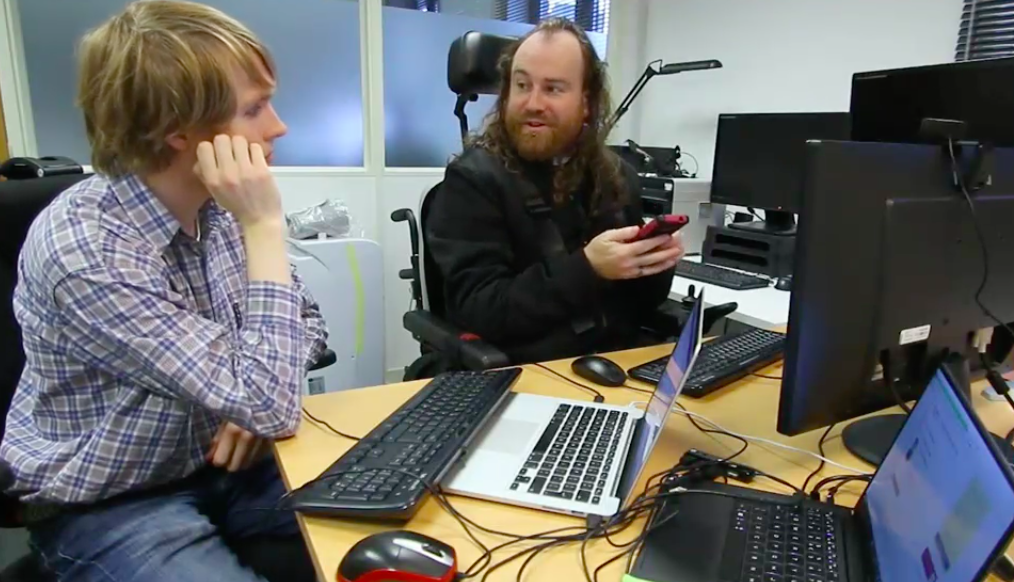Two steps to ensure usability for your website or mobile app
Robin Christopherson | 18 May 2023
Making sure your websites and mobile apps are usable by the broadest possible audience is essential to ensure that your product is truly competitive. Real-life usability for users regardless of impairment or environment takes two distinct steps.
Step 1: Ensure your website is compliant with Website Content Accessibility Guidelines
The first step to ensuring that your products and projects are as inclusive as possible is to use the appropriate handy accessibility checklist and start ticking off those issues you find.
For websites, the World Wide Web Consortium (W3C) Web Accessibility Initiative (WAI) website will be useful for resources and techniques to test for compliance. Similar guidelines exist for mobile platforms such as iOS and Android.

Testing your app or website for compliance isn’t necessarily a quick and simple process – but it’s well worth the effort.
An accessible product is easier to use by everyone. This makes eminent sense if you think about it for a second; improving an app or website so that it is easier to use by those with difficulties will make it better for all users (particularly when you consider that most of us are now ‘extreme users’ on a daily basis – using our phone one-handed, squinting at our screens on a sunny day, quickly sending a WhatsApp before we rush out the door or order an Uber a little worse for wear).
Oh, and it’s also the law.
Want some help? Check out AbilityNet's range of Digital Accessibility Services.
Step 2: Conduct user testing for usability assurance
Once your website, app, e-marketing campaign and customer comms are compliant, what should you do next to ensure usability for every user?
Well, just as you wouldn’t design a product on paper and then unleash it on the world without a significant bit of user testing, you shouldn’t do the same for your digital products either.
I know what you’re saying; “We always do user testing before we launch any product or update” and I’m sure that’s true, but you aren’t testing it with the right users if you want to ensure true usability by the broadest audience possible.
Testing with users that have a range of disabilities and impairments is vital.
 The adjacent image is taken from a video by Barclays about user testing on their online banking services to explain the on-going impact that crucial second step is having across their range of products. You really should check it out.
The adjacent image is taken from a video by Barclays about user testing on their online banking services to explain the on-going impact that crucial second step is having across their range of products. You really should check it out.
Want to know more about user testing? I’d thoroughly recommend reading Ethan Marcotte’s excellent 'Accessibility is not a feature' article, in which, at one end of the scale you have the conviction that accessibility can be delegated to the tools you’re using alone (“We don’t have to worry about accessibility. The framework we’re using takes care of it for us”), with conscientious checking for compliance being sufficient somewhere in the middle, and at the other end of the success-spectrum you get the likes of Barclays.
Award-winning extreme user testing
So strongly do Barclays believe in extreme user testing, that no new website or mobile app is released without first being tested (and then badged for customer confidence) by AbilityNet.

With a reputation for providing a reliable and thorough accessibility testing service, AbilityNet was also chosen by the British Museum to conduct user testing sessions to identify how disabled users navigate and use its website.
“AbilityNet offers a wide choice of services to suit our needs, such as design and face-to-face user testing,” says the Museum’s Digital Project Manager, Harry Potia.
Read more about how Barclays and The British Museum have benefitted from our accessibility services and meet many more of our clients - including Heathrow, British Telecom and Skyscanner in our selection of case studies.
Frequently asked questions about usability
How to do user testing yourself
Learn how to begin your own accessibility testing in our training course or speak to our experts about AbiltyNet’s user research and testing services.
How often do organisations conduct usability testing or user research?
In September 2022 AbilityNet surveyed more than 400 professionals worldwide about attitudes to digital accessibility in their organisation. Our Attitudes to Digital Accessibility 2022 report focuses on five key areas which includes accessibility processes such as user testing and research.
What’s it like to be a usability consultant?
Read our interview with Rina, an AbilityNet Accessibility and Usability Consultant.



